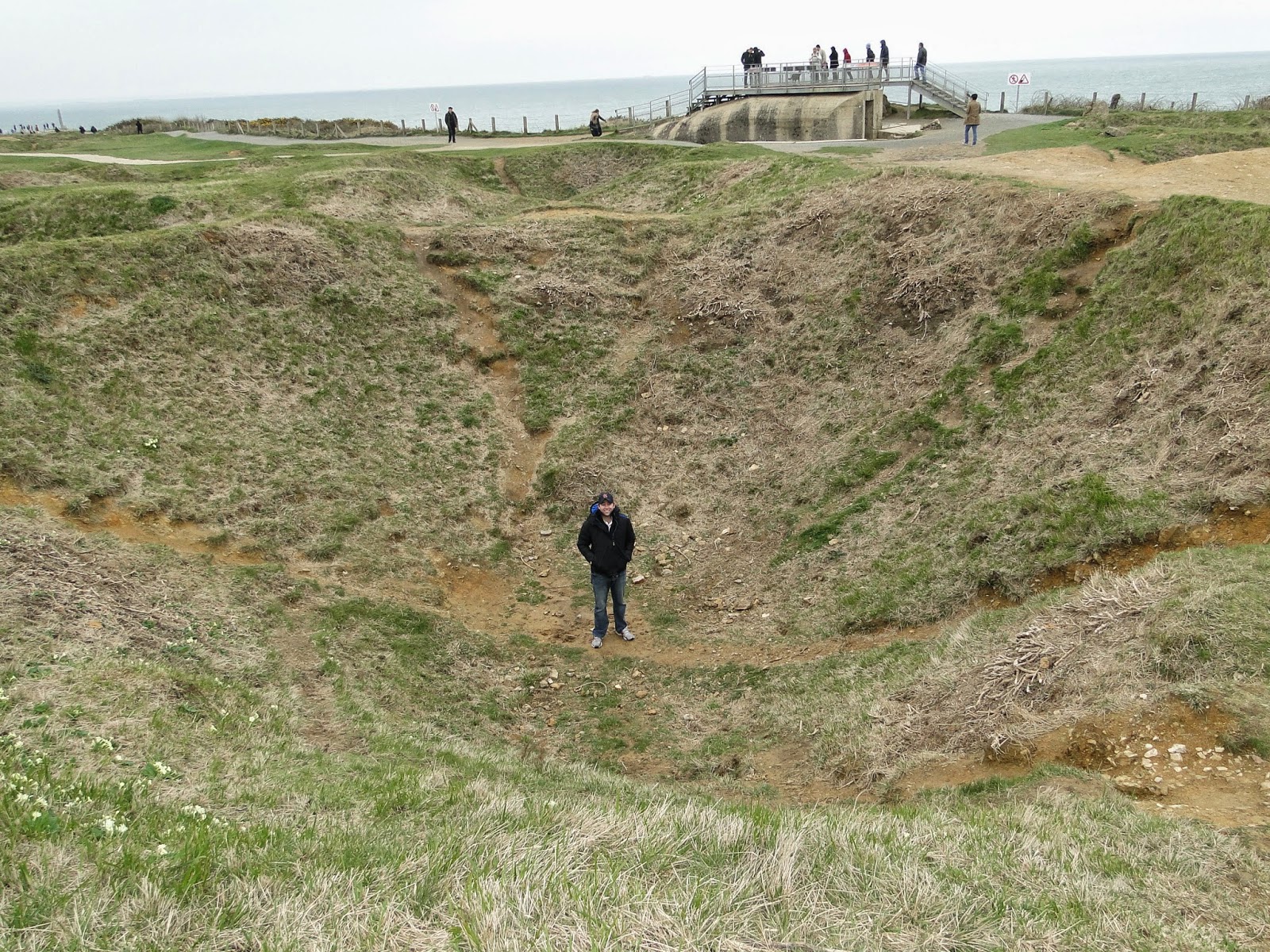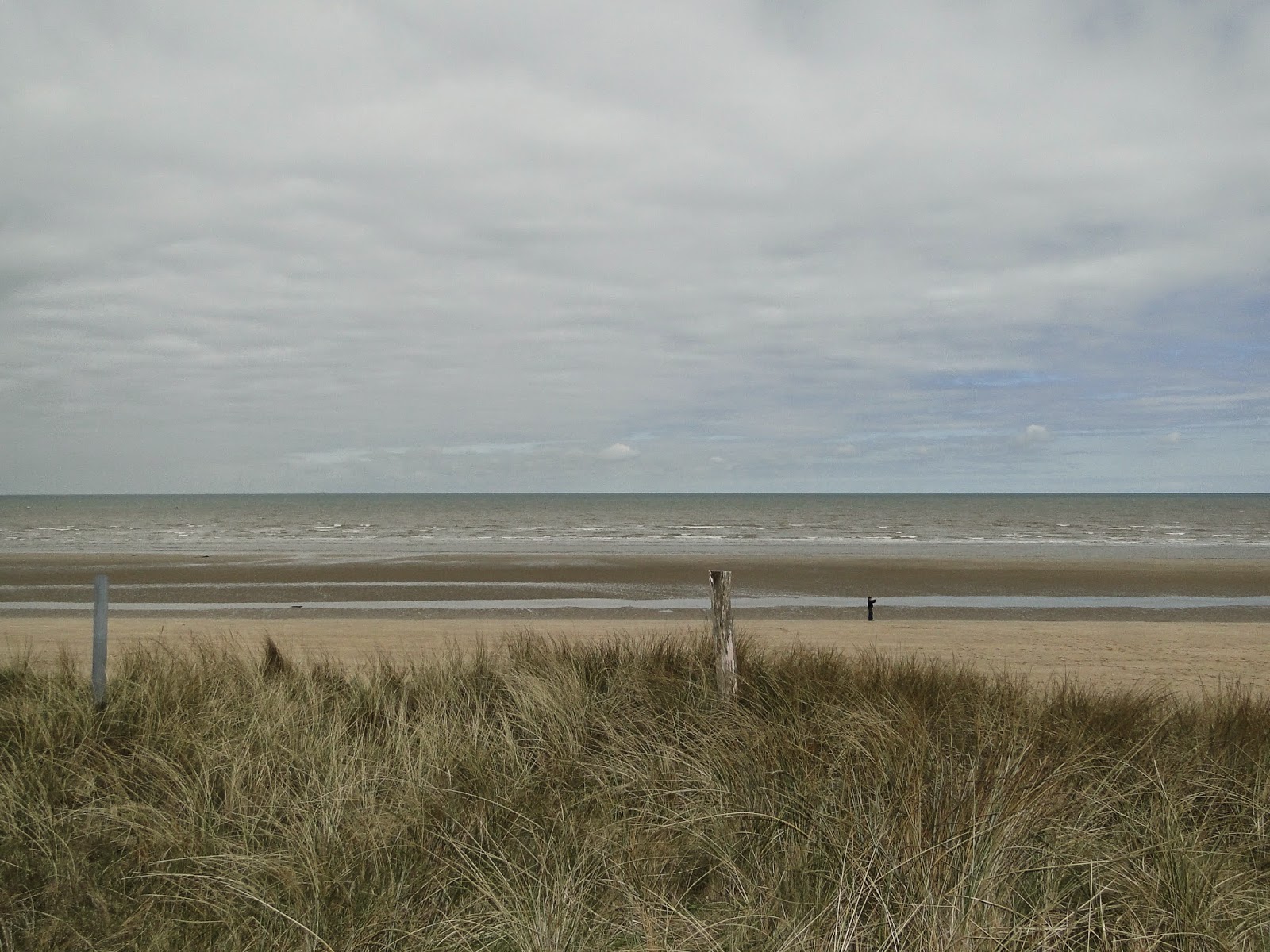Just a little heads up, normally my blog posts are organized chronologically, but this post is going to be all about our experience with our World War II sites we visited.
We woke up early on Saturday to head to Omaha Beach, which was one of the five famous beaches of D-Day (June 6, 1944) when the allied troops invaded France to fight the Germans during WWII. Many say this is the most famous beach, as the most people died here. The other beaches were Utah, Gold, Juno, and Sword. The United States was in charge of coming up with code names for the beaches they were invading. They named them Omaha and Utah. The British were in charge of naming the other three: Juno, Sword, and Gold. Both allies were supposed to follow protocol by randomly naming the beaches from code books. The British followed that rule, while the United States picked their two names because they like them. Jeff thought this was comical, as it sums up the personalities of the Americans and British perfectly.
The high tide. It was higher in some parts of the beach.
I think he read every single one of these we came across on the trip.
A German gun position at Omaha Beach
So many American Flags up around the area
The tide was high when arriving to Omaha Beach. We weren't able to walk along it for too long, as the water came up to the rocks that lined the beach. We walked along on a sidewalk nearby, then made our way through a Natural Reserve area filled with wildlife. I took a few pictures of a couple cute snails I found...but I'll save the space on this post with just war pictures!
After walking beach side for an hour and a half, we made it to the Normandy American Cemetery. The land is on French soil (many think it becomes American soil), but the land was given to the Americans for free and is run by Americans as well. We walked around the area, in silence, as it was so mind boggling to see all of the graves (over 9,000). The families had the ultimate decision whether they wanted their loved one to be buried in the cemetery or sent home to be buried there. There was also a special area called the Garden of the Missing, of those that died, but their bodies were never recovered (~1,500). On the wall, 15 of the names had special markers next to them to symbolize that the body was found at a later date (One in 2009). It is a closed cemetery, so none of the 15 were not laid to rest on the grounds. We really enjoyed our time here, and how moving it was to just walk through reading names, ranks, and death date (no birth date). The youngest person buried there was 17 and the oldest was in his 60's (I can't remember the actual age). There are 33 pairs of brothers buried next to one another and sets of father/sons as well. We learned so many facts, especially during our free tour, that I could go on and on.
The Garden of the Missing
The Memorial
There are over 150 unknown soldiers buried here. Many wonder if some buried match those names in the Garden of the Missing
1 of 2 American flags that fly high above the graves. All the graves face west, so they can face "home".
The pictures do not do the size of this place justice. There are almost 150 Stars of David scattered amongst the crosses.
The American Cemetery overlooks Omaha Beach
This was on the ceiling of the chapel. I really liked it, as it shows the process of the soldier going to war, and then off to Heaven.
This was on the ceiling of the chapel. I really liked it, as it shows the process of the soldier going to war, and then off to Heaven.
Two Roosevelt brothers buried next to one another. Quentin was the only person buried here that did not die in WWII, as he died in WWI but was relocated to be buried next to his brother, Theodore Roosevelt, Jr., who is one of three to earn gold lettering as he earned the Medal of Honor .
We headed to Pointe du Huc, which we thought was just a monument, but it was so much more. On our way to the cliff side, there were tons of posts with information. After reading the stands, we made our way to an area filled with bomb craters. The pictures do not do the depth justice, as I needed to be a lot higher to take the picture of Jeff below. If you're interested more in these, search for Pointe du Huc aerial views...amazing! There were also German pillboxes, that you could explore. They were incredible and a few were still in a good shape, but the others were unfinished before the bombing began. It was hard to imagine the allies climbing up the side of the cliffs to get to the Germans.
In one of the bomb craters
Beautiful views from the Pointe du Huc.
This is a little better of a view to show the cliffs that the soldiers had to climb up
This is a little better of a view to show the cliffs that the soldiers had to climb up
One of the surviving German pillboxes
View from the pillbox. The cliff is where the grass starts. So scary!
We went back to Omaha beach afterwards, and we were in awe of how far the tide went back (500-700 yards). It was incredible to see the difference in the time of day. We were actually able to walk the beach for a while and think about the arrival of the troops.
The tide was low at this point. It was freezing out, but Jeff didn't want his shoes to get wet.
The next day we continued our D-Day Experience by visiting Utah Beach. This was one of the riskier invasions as it was only planned 2 months ahead of the attack. There were only 4 outlets for troops to get through, but they successfully did through bombing, paratroopers, and soldiers on boats. It proved to be one of the most successful invasions, and helped the troops get to Cherbourg which was a deep water port. Overcoming this area would make it easier for the allied troops to bring in supplies. After walking the beach for a bit, we made it to the Utah Beach Museum. It was nicely done, as there was a movie about D-Day at Utah Beach, loads of information, and many of the vehicles and artifacts used during the war.
Beautiful beach
So many artifacts to read through. My favorite was reading the letters to/from soldiers and their loved ones. They were both comical and sweet.
I, for one, am not really a war or history buff...but this was an incredible trip. I learned a lot, and I know Jeff enjoyed his time as well. We could have easily spent another two days in the Normandy area finding more history and war spots, as there were so many.
On to the next adventure...
























No comments:
Post a Comment